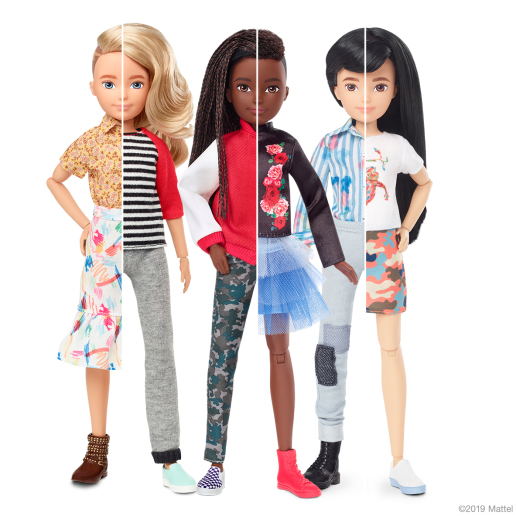To each their own Barbie© doll!

Neither girl nor boy: breaking down stereotypes
Creatable World™ offers children a neutral base on which to invent their own characters. Long or short hair, skirt or trousers, or both at the same time. There are no limits! Children are free to mix and match outfits and styles, and can use to the accessories provided to decide whether or not to assign a gender to their doll.
Continuing to adapt to society
A few months after celebrating the 60th anniversary of the creation of the Barbie© doll, Mattel continued to transform the range of its legendary doll.
After having gone all out on an always trendy homemaker Barbie© and a sporty businessman Ken, the American company began, a few years ago, to adapt to a world in which women work and men take care of the children.
Mattel sold its billionth Barbie© doll in 1997. In late 2015, a small boy appeared for the first time. In 2016, three new silhouettes were created, including a “Curvy” doll.
While remaining 100% plastic
The Barbie© doll has always been made of plastic. Initially made entirely of PVC, it became more complex over time: it first got arms made from EVA (ethylene-vinyl acetate), a torso made from ABS (acrylonitrile-butadiene-styrene), joints made from PP (polypropylene), not including all the different materials used for the hair, the eyes, the clothes and the many accessories!
Will they replace the undefeatable Barbie®?
All little girls born after 1959 grew up with the Barbie© doll, the 29cm-tall plastic doll sold by Ruth Handler of the Mattel company.
A product of the 1960s and a triumph of the 1980s, the Barbie© doll was able to adapt to the following decades as it is first and foremost the symbol of a consumer society able to capture all trends, even those that seem the most advanced, also enabling all children to identify with their chosen character.
Being well aware of the sexist stereotypes that its iconic doll could convey, the American brand’s Los Angeles studios designed a new model intended for all. A new adventure begins for the younger generation.
More information:
https://www.mattel.com




